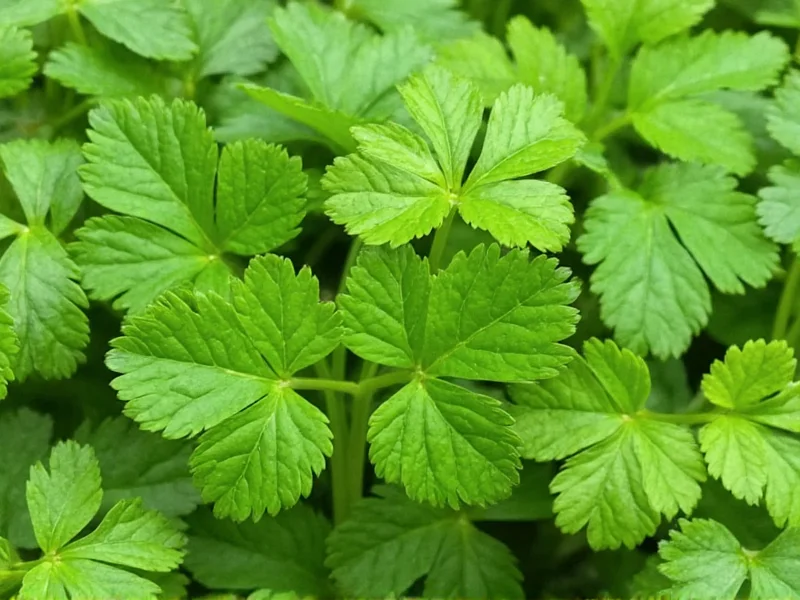Many home cooks encounter confusion when recipes mention either "coriander" or "cilantro"—often assuming they're different ingredients. Understanding the coriander vs cilantro distinction prevents recipe mishaps and clarifies international cooking instructions. This comprehensive guide explains the linguistic, botanical, and culinary aspects of this common point of confusion.
The Botanical Reality
Botanically speaking, coriander and cilantro come from Coriandrum sativum, an annual herb in the Apiaceae family. This plant produces:
- Leaves and stems: Known as cilantro in the Americas, coriander leaves elsewhere
- Seeds: Called coriander seeds globally, though sometimes just "coriander"
- Roots: Used in Southeast Asian cuisine
- Flowers: Edible with a mild coriander flavor
The entire plant is edible, but the leaves and seeds have dramatically different flavor profiles. Fresh leaves offer a bright, citrusy taste with soapy notes (for some genetically predisposed individuals), while dried seeds provide warm, nutty, slightly citrus flavors essential in spice blends worldwide.
Regional Terminology Explained
The difference between coriander and cilantro primarily reflects English dialect variations rather than botanical differences. This linguistic divide creates confusion for cooks navigating international recipes.
| Region | Leaves/Stems | Seeds | Common Usage Context |
|---|---|---|---|
| United States & Canada | Cilantro | Coriander | "Add chopped cilantro" vs "ground coriander" |
| United Kingdom & Commonwealth | Coriander (leaves) | Coriander (seeds) | "Fresh coriander" specifies leaves |
| Spain & Latin America | Cilantro | Coriandros | Spanish-derived terminology |
| India & Southeast Asia | Dhaniya (leaves) | Dhaniya (seeds) | Hindi/Urdu term used for both parts |
Linguistic Origins
The word "coriander" traces back to the Greek koris (bug), likely referencing the plant's pungent smell. Latin adopted it as coriandrum, which evolved into Old French coriandre and eventually English "coriander" around the 14th century.
"Cilantro" entered American English through Spanish, which transformed the Latin term into cilantro specifically for the fresh herb. When Mexican cuisine gained popularity in the US during the 20th century, "cilantro" became the standard term for the leaves to distinguish them from the seeds.
Culinary Implications
Understanding coriander leaves vs cilantro terminology prevents recipe errors. Consider these practical scenarios:
- Following British recipes: When a UK cookbook says "chop fresh coriander," it means the leaves (what Americans call cilantro)
- Using American cookbooks abroad: Requesting "cilantro" in London might cause confusion—ask for "fresh coriander" instead
- Seed confusion: "Coriander" in any recipe typically means the seeds, except when specified as "fresh coriander"
The flavor difference between fresh leaves and dried seeds explains why recipes specify one or the other. Fresh cilantro/coriander leaves lose their distinctive flavor when cooked, making them ideal as a finishing garnish. Coriander seeds, however, benefit from toasting and grinding to release their warm, complex flavors essential in curries, sausages, and baked goods.
Common Misconceptions
Several myths persist about coriander vs cilantro:
- Myth: They're different plants
Fact: Same botanical species—only the terminology differs regionally - Myth: Cilantro tastes soapy to everyone
Fact: Only 21% of people have the OR6A2 gene variant causing this perception - Myth: Coriander seeds come from a different plant
Fact: Seeds develop after the cilantro/coriander plant flowers
Practical Cooking Guidance
When navigating recipes with coriander and cilantro terminology:
- Check the recipe's country of origin to interpret terms correctly
- Remember that "ground coriander" always means seeds, regardless of region
- Substitute dried cilantro for fresh only in emergency situations (quality suffers significantly)
- Store fresh cilantro/coriander with stems in water like cut flowers to extend freshness
Understanding these regional naming differences for coriander transforms confusing recipe moments into successful cooking experiences. Whether you call it coriander or cilantro, recognizing it's the same versatile plant helps you confidently explore global cuisines without terminology barriers.











 浙公网安备
33010002000092号
浙公网安备
33010002000092号 浙B2-20120091-4
浙B2-20120091-4